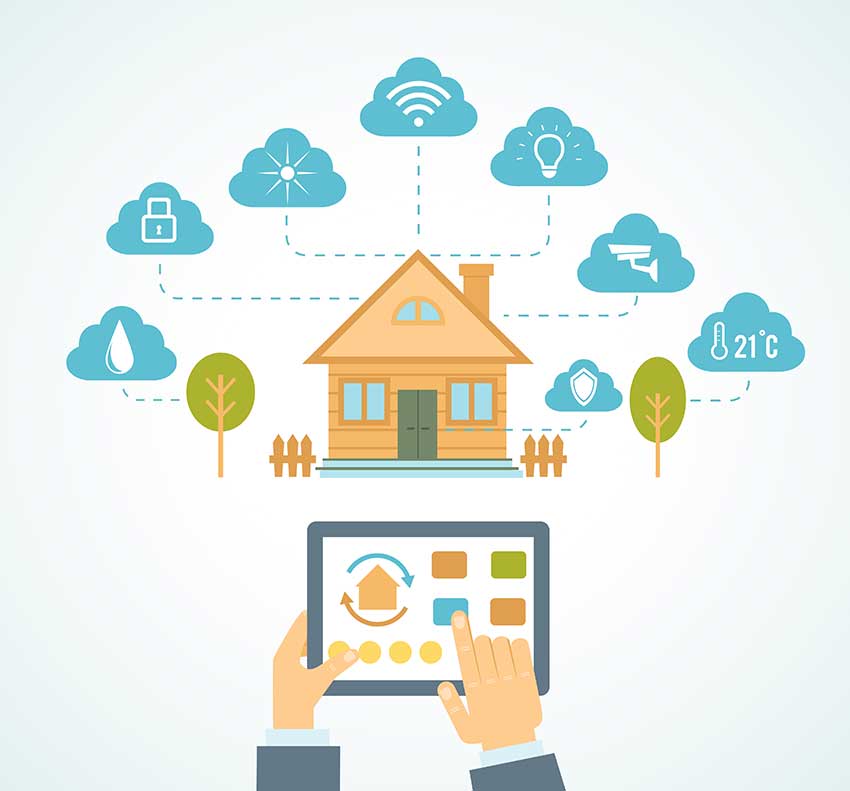4 Products that Make your Home “Smart”
By Josh Friesen, Contributing Writer
You’re probably hearing the phrase “The Internet of Things” more and more these days. It refers to the growing trend of including wireless communication features in just about any electronic device, allowing them to communicate with the user, manufacturer and other Internet enabled devices with ease. This technology is finding it’s way into our home systems at a rapid pace, making a fully wireless, fully communicative environment achievable. Here are some of the most promising smart home products on the market today:

-
The Nest Thermostat
Nest developed their learning thermostat with the goal of making the programmable thermostat user-friendly. Company research shows that correct use of a thermostat could lower energy costs by up to 20%, but most are so difficult to program, consumers rarely take advantage of their full energy-saving features.
With Nest, the process is greatly simplified. After installing the thermostat, you actively manage your home’s temperature for one week using a simple dial. During those first seven days, Nest learns your preferences and schedules, and starts making adjustments automatically. Nest knows when you sleep, when you’re away at work, and what temperature you’re most comfortable at, then programs adjustments accordingly. Nest also offers tips on how to be most economical with your preferred usage.
-
Dropcam
The Dropcam monitoring system is a simple-to-install camera capable of wirelessly streaming images to your devices and offering a high-definition portal into your home, office, or business. The Dropcam app features a motion-alert option that will automatically notify you if there’s motion in front of the camera, or you can look in on what’s happening live at any time. If you’re out on a date night, Dropcam’s two-way communication ability allows you to check in on your kids between dinner courses. If you’re using Dropcam for security or insurance purposes, they offer cloud-recording capabilities for long-term storage of everything that’s happening while you’re away.
-
August Smart Lock
Wireless technology now even extends to your home’s front door. With the August Smart Lock, you have the ability to control access to your home through your smartphone, issue temporary access to guests or contractors, and make a log of who’s coming and going. The August is easy to install and runs on batteries so it will continue to work even if your power or Wi-Fi is offline.
-
Apple HomeKit
Currently all these diverse home technologies operate independently through unique apps housed on your smartphone or tablet, but developers are working on ways to seamlessly integrate all these technologies under a single master control system.
It’s been rumored that Apple will include, what they call, the HomeKit app in their updated iOS release this fall. HomeKit will allow users to customize specific scenarios within their smart home, and the app would then coordinate compatible devices with corresponding actions. For example, a user could tell HomeKit, “I’m Going to Bed,” and the app would lock the doors, turn off the lights, lower the thermostat, and set the alarm. If the rumors are true, HomeKit promises to be a powerful hub through which the user gains control over all their home’s technology.
Apple isn’t the only company in pursuit of this market. Google recently purchased Nest, and it’s thought that they plan on positioning the Nest Thermostat as the Android portal for smart home control. There’s no doubt Apple and Google will compete heavily for the upper hand in the smart home marketplace and the consumer stands to benefit through lower prices and better products. With technology advancing rapidly, the potential for the smart home seems endless.